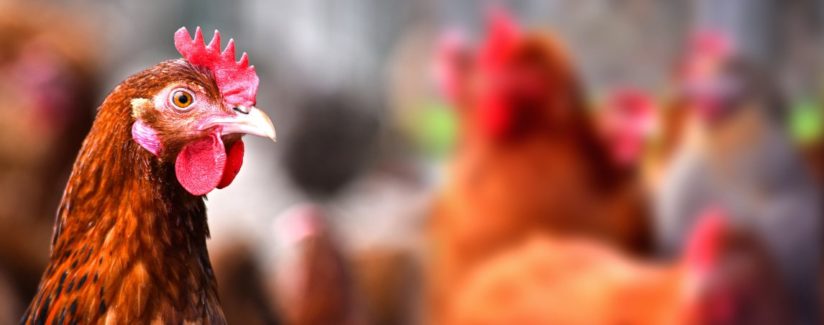
Test Your Chicken Knowledge
08/16/2019
Chicken dinner is a winner – and so are chicken nuggets, chicken pot pie, chicken noodle soup, chicken salad and the list goes on. Americans like chicken – it is the No. 1 protein in our diets. Chicken is a good source of niacin, vitamin B6, biotin and vitamin B12.
Americans enjoy chicken and may be curious to learn more about them, so we put together a fun quiz to test your knowledge. Thank you to poultry experts Dr. Sara Orlowski , at the University of Arkansas for lending her expertise.
True or false: Broilers are raised in cages.
Answer: False.
“Broilers are raised in open floor, environmentally controlled houses,” Dr. Orlowski said.
Broiler is the name for chickens raised for meat. Egg-laying hens – called layers – are often kept in cages, while some are raised “cage free.” Farmers care for the birds and adjust the barns as needed.
“The environmental conditions, such as temperature, humidity and lighting are maintained and regulated throughout the birds’ life to allow for optimal comfort of the bird and efficient growth.”
Some chickens are raised “free-range,” which means that the birds must have access to the outdoors.
“That does not mean however, that the chicken is raised completely outside. It still has a barn it can stay in with access to feed and water,” she said. Being outside, however, has some risks for the birds. “Free range production can lead to an increased risk for disease in chickens and allows for the possibility of predators such as hawks or foxes to gain access to the birds.”
True or False: Chickens are amazing.
Answer: True.
Chickens have an incredible ability to grow quickly using little feed.
That is why chicken is often an affordable option in the meat case.
“Chickens are very efficient in converting feed to muscle relative to beef or pork, and feed costs account for the majority of the costs associated with meat production,” Dr. Orlowski said. “Processing of chickens is also highly automated and therefore, highly efficient.”
The food the birds eat is formulated to provide a balanced diet.
“The diet consists of corn (a source of carbohydrates or energy), soybean meal (a source of protein), a fat as well as the proper amount of vitamins and minerals necessary for growth. A chick’s diet is different from the diet of a chicken ready to process so throughout the life cycle of the bird, they can be fed three to five diets formulated to meet the need of the chicken as it grows,” Dr. Orlowski said.
True or false: Chickens are given hormones.
Answer: False.
“The only hormones that will be present in the chicken or eggs that you buy at the store will be the ones naturally produced by the bird making all poultry products, whether labeled or not, ‘hormone-free,’” Dr. Orlowski said.
Chickens are not given steroids, either. The Food and Drug Administration prohibits the use of both hormones and steroids in poultry.
True or False: Chickens are genetically modified.
Answer: False
Today’s chickens reach market weight more quickly than chickens raised years ago. Is it because they are GMOs? The experts say no.
“No recombinant gene technologies such as introduction of genetic material from another species or rearranging of specific genes are used in chicken production,” Dr. Orlowski.
Then how do they grow to a larger size in less time?
“Chickens are specifically bred or genetically selected for traits such as growth rate, meat yield and welfare traits. Selection of chickens is based off of individual breeding values from various traits and their ability to pass those traits on to their offspring,” she said.
Chickens are being treated in new ways to prevent disease.
Answer: True.
Just like humans, chickens sometimes get sick and may be given antibiotics to treat or prevent disease. The most common disease they are treated for is called coccidiosis.
“This disease affects the gut environment of the chicken resulting in poor growth and even death,” Dr. Orlowski said.
However, some producers have decided not to use antibiotics.
“In recent years, based on demand from consumers, most chicken companies are choosing to produce their chickens ‘antibiotic free-ABF’ or ‘no-antibiotics ever-NAE’ resulting in a slight rise in mortality. Novel methods for controlling diseases such as coccidiosis are being evaluated by companies and universities worldwide.”
Is it safe to eat meat from chickens that have been given antibiotics?
“Yes! Every antibiotic that is approved for use in chickens also has a withdrawal time. A withdrawal time is the amount of time the chicken needs to break down the antibiotic so that is no longer in its system. If a chicken is given antibiotics for any reason, it will not be processed for human consumption until the withdrawal period for that specific antibiotic is complete,” Dr. Orlowski said.
While we may not be able to answer why the chicken crossed the road, these facts help us to know more about how chickens are raised.

























